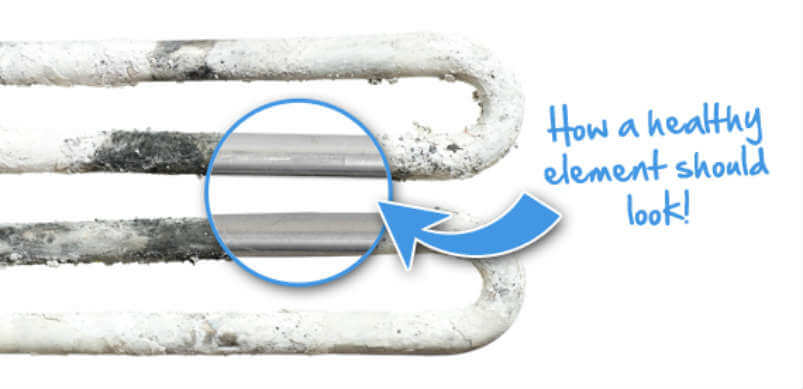
1 Easy Way You Can Tackle Limescale
August 27, 2015 | General Appliance Care & Advice | No comments
60% of the UK is considered a hard water area, and without even realising it this could be having a detrimental effect on washing machines, dishwashers and other household products which come into regular contact with water.
This is due to the build up of limescale within the appliances, which if left will hinder the overall performance and lifespan of each appliance. But it is possible to tackle limescale in one easy step, as outlined below.
What is Limescale?
If you take a quick look inside your kettle it’s likely you’ll see the heating element covered in an off-white chalky substance, this is limescale. But it isn’t only your kettle which can suffer from limescale – your washing machine, dishwasher and central heating can also show signs of limescale build up.
Effects of Limescale in Your Home:
The effects of limescale on your household appliances may not be evident at first glance, but even the smallest coating could be costing you a significant amount each year. According to British Water, even 1.6mm of limescale on a heating element in your household appliance can reduce the effectiveness of the appliance by 12%.
The impact of limescale on your appliances is more than reducing the energy efficiency, as limescale builds up it also has the potential to increase the risk of your appliances developing faults, which in turn can prove costly as you’ll need to spend money to fix the fault yourself.
Leaving limescale untreated and to build up within your appliance, whether a washing machine, dishwasher or your kettle, will also increase the potential of the appliance burning itself out more quickly than normal. It’s therefore important to ensure you regularly treat your appliances against the build up.
How To Tackle Limescale in 1 Simple Step:
Unfortunately limescale reacts with cleaning products, making them less effective. As such, when it comes to tackling limescale some recommend using vinegar and although this may be effective to reduce the impact of limescale in your kettle when it comes to tackling the build up of limescale in your washing machine or dishwasher, we recommend you use a specialist limescale and detergent remover as part of a monthly maintenance wash.
Incorporating a limescale and detergent remover into a maintenance wash is the easiest way to kill bacteria, remove stale odours, clean and sanitise your appliances, whilst tackling limescale. In turn, this will help you protect your appliance, extend its life and reduce its energy consumption, saving you money in both the short and long term.
To effectively use such a cleaning product within your washing machine, it is recommended you pour the entire contents of the cleaning sachet into the bottom of your washing machine drum, before placing the appliance onto an empty hot wash and running the cycle.
For effective use of such a cleaner within your dishwasher, when the appliance is empty we suggest you pour half the sachet into the detergent dispenser and the remainder into the base of your dishwasher before running a wash cycle.
NB: Whether using the limescale and detergent remover in a washing machine or dishwasher, it is important to make sure you do not use a pre-wash setting.
Taking the time to run a maintenance wash with a limescale and detergent remover, on your dishwasher and washing machine on a monthly basis will make all the difference to the performance of your appliances – helping save you money in both the short and long term.

